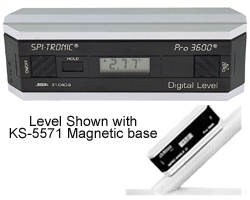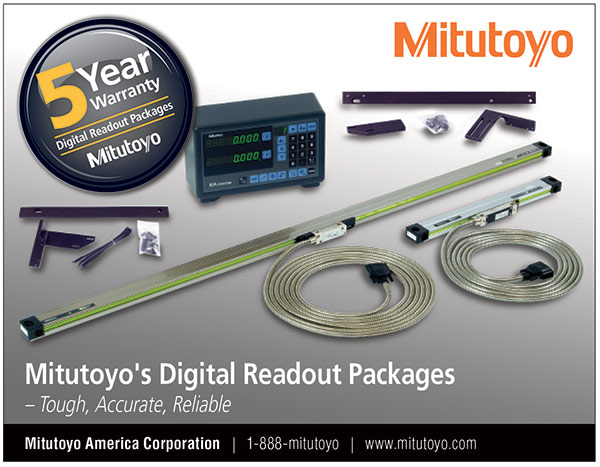Order at
http://www.lighttoolsupply.com/
Calibrating Gages: Your Place Or Mine?
George Schuetz, Mahr Federal Inc.
All gaging equipment must be calibrated periodically to ensure that
it's capable of performing the job for which it's intended: i.e.,
measuring parts accurately. This has always been necessary for the
purpose of maintaining quality, but there are now additional, external
reasons to establish and maintain a regular program of gage calibration:
customers' requirements. More and more OEMs demand that suppliers
document their quality efforts from start to finish. ISO 9000 is one
more manifestation of this trend, and it is forcing companies to examine
their calibration programs, identify their weaknesses, and improve them
wherever possible.
Some large companies with thousands of
gages can cost-justify hiring or training specialists in gage
calibration methods and supplying them with equipment and resources to
perform virtually all calibration duties in-house. For most machine
shops, however, the economical approach is to hire a calibration
service.
ISO 9002, which applies to all manufacturing
operations, requires suppliers to calibrate "all inspection, measuring
and test equipment and devices that can affect product quality at
prescribed intervals, or prior to use, against certified equipment
having a known valid relationship to nationally recognized standards --
where no such standards exist, the basis used for calibration shall be
documented." (ISO9002.4.10.b) Let's elaborate on some of these points:
"(P)rescribed intervals" usually translates into a minimum of once per
year. Where annual calibration is inadequate to ensure accuracy, a
shorter interval must be established.
"(C)ertified equipment
having a known, valid relationship" means that the calibration house
must have its own equipment certified. In the U.S., "nationally
recognized standards" implies the National Institute of Standards and
Testing (NIST), although other standards, such as DIN, may be used to
satisfy overseas customers. "(W)here no such standards exist," usually
refers to highly specific industries or products, where the manufacturer
must develop his own standards and test methods -- (say, a foam pad of
known density, used to master a chocolate-pudding-consistency gage).
Calibration houses issue a certificate of calibration for every gage
tested. These certificates are essential for users to document their
calibration programs. At minimum, they must include:
• The serial number and description of the gage tested.
• The serial number of the gage(s) used to perform the testing.
• The level of uncertainty of the calibration -- in other words, the tolerances of the data.
• A statement of traceability to NIST (or other standard).
• A serial number identifying the NIST test upon which the calibration house's own standard is based.
• Reference temperature under which the calibration was performed.
• Name of the customer; name and address of calibration service.
• Date of calibration and signature of the technician.
• Test results: i.e., error in the gage, measured at appropriate intervals across its entire range.
• If the gage is adjusted subsequent to testing, it must be recalibrated, with results as above.
Some providers automatically remind their clients which gages need to
be calibrated, and when. Most gages can simply be boxed and shipped to
the calibration house, although in the case of large, elaborate gages
(e.g., circular geometry gages, CMMs) the mountain must come to
Mohammed. The calibration service will come prepared with
NIST-traceable gage blocks, precision balls, a thermometer, and any
other standards needed to perform the job.
How can a machine
shop without expertise in calibration intelligently select a provider?
Naturally, cost and turnaround time are important, but don't sacrifice
quality for convenience. Above all, ISO 9000 requires that consistent
procedures be applied, and any professional calibration house should be
able to document its methods in a procedures manual. Ask to see it, and
if it's unavailable, look elsewhere.
Surprisingly, there are
no certification standards for calibration labs themselves, so a
supplier's reputation is important. Don't be afraid to ask questions --
lots of them. What are his areas of expertise? How are his
technicians trained, and what is their level of experience? What test
equipment is used, and to what standards can test methods be certified
(e.g., MIL, GGG, ANSI)? What quality control methods are in place?
What is the physical design of the facility, what are the control
tolerances on temperature and humidity, and how is the equipment
protected from the effects of outside vibration? A visit may be well
worthwhile.





